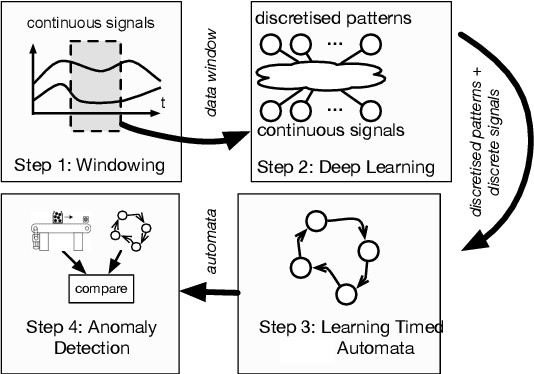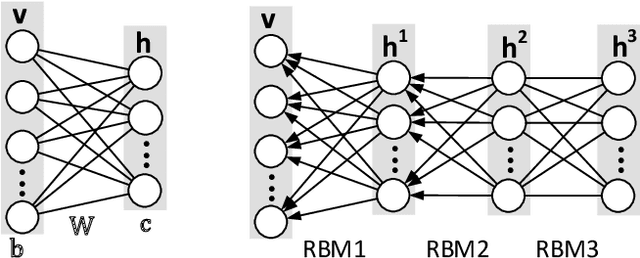Alexander Maier
A Novel Anomaly Detection Algorithm for Hybrid Production Systems based on Deep Learning and Timed Automata
Oct 29, 2020



Abstract:Performing anomaly detection in hybrid systems is a challenging task since it requires analysis of timing behavior and mutual dependencies of both discrete and continuous signals. Typically, it requires modeling system behavior, which is often accomplished manually by human engineers. Using machine learning for creating a behavioral model from observations has advantages, such as lower development costs and fewer requirements for specific knowledge about the system. The paper presents DAD:DeepAnomalyDetection, a new approach for automatic model learning and anomaly detection in hybrid production systems. It combines deep learning and timed automata for creating behavioral model from observations. The ability of deep belief nets to extract binary features from real-valued inputs is used for transformation of continuous to discrete signals. These signals, together with the original discrete signals are than handled in an identical way. Anomaly detection is performed by the comparison of actual and predicted system behavior. The algorithm has been applied to few data sets including two from real systems and has shown promising results.
 Add to Chrome
Add to Chrome Add to Firefox
Add to Firefox Add to Edge
Add to Edge